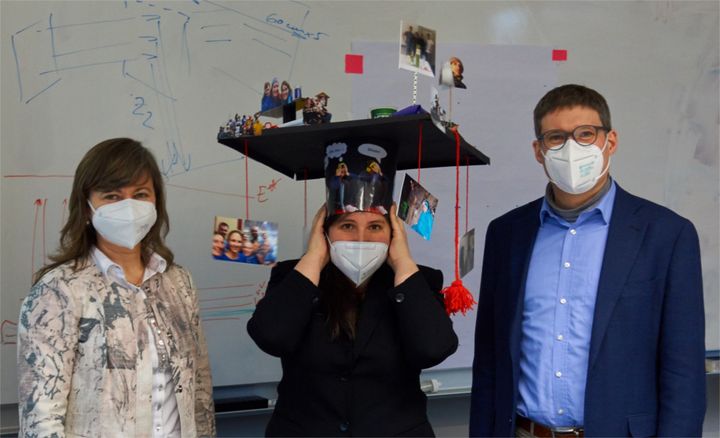"The automation and validation of a morphological and chemical quantification procedure for microplastic fragments using Raman microspectroscopy"
Summary
Microplastic contamination of a growing number of environmental compartments and food items is currently the focus of many news stories. But do we even have appropriate methods to detect microplastic? The overreaching goal of this dissertation was to create and validate automated measurement procedures for the quantification of particles larger than 10 μm and up to 1 mm via Raman microspectroscopy. To this end, (i) a procedure was developed for the production of reference materials, (ii) a method to determine the minimal sample size for a representative measurement, (iii) as well as the necessary tools to enable automated morphological and chemical analysis.
The reference materials were produced by sonication of solid polymers in alkaline solution, based on the rationale that many microplastic publications cautioned about the alteration of samples by sonication, but none had tried to harness this mechanism. Polylactide, polyethylene terephthalate, and polystyrene were chosen to cover various polymer materials with potentially different fragmentation behavior. We could produce particles in the range of 100 nm – 1 mm in aqueous solution in large numbers. In contrast to polymer reference materials that are produced by grinding, these particles were suspendible in water and did not adhere to glass walls. Hence, our procedure yields a fast and economic approach to generate reference materials using a simple ultrasonic bath accessible to any laboratory. Such reference materials may serve as standards to improve and validate workflows during method development and may even serve as spikes that mimic environmentally relevant particles for toxicological testing.
Subsequently, to provide a basis for quantitative analysis of microplastics, theory of sampling was applied to determine the minimal number of particles that a representative measurement requires. The calculation of the error induced by random sampling of single fragments yields a minimum sample size, which corresponds to the point at which the effort to measure additional fragments exceeds the improvement in the error margin. For samples containing 10 000 – 100 000 fragments and a microplastic content equal to or above 1%, a subsample of 7 000 will deliver a margin of error of ~20%.
Finally, automated processing is crucial when applying this theoretical consideration to samples. To determine the total number of fragments and to select a random subsample for measurement, a microscopy image of the entire sample needs to be acquired. This image may contain the morphological information of up to 100 000 particles which needs to be extracted quantitatively. Therefore, an automated image segmentation routine - TUM-ParticleTyper - was developed, which morphologically characterizes and localizes all fragments with an area exceeding 51 pixels. After the localization, the center coordinates of each particle are estimated and the subsample is automatically selected. All particles in the subsample are measured (in our case a by Raman microscope with an automated stage). The Raman measurements produce a single spectrum for each particle and can be interpreted by a database match. The optimal parameters of the matching procedure were determined by comparing the outcome of the database match with a manual evaluation of the spectra. Since only a single point is measured for each particle, the representativeness of this measurement was evaluated by a comparison with Raman mapping, a high-speed measurement of points separated by a small step size to create a chemical image. The single point approach was found to be faster and more accurate. By focusing on each step of the analysis individually, we were able to create an overall robust procedure, starting from the point that all particles are deposited on the filter, however excluding additional uncertainties from primary sampling or sample preparation.
Together, these advances enable the spectroscopic measurement of microplastic samples. The quantification range was validated and a comparative study showed that by using an adaptive threshold the common global thresholding for particle detection could be outperformed. Furthermore, a minimal quantifiable particle size and microplastic content of a sample was determined. Different reference materials, as well as genuine samples, were used to test the adaptability of this method. Samples can now be processed within 3 workdays. This includes 48 h for unsupervised automated localization of all particles/fibers larger than 10 μm and the measurement of a subsample consisting of 7 000 fragments using a Raman microscope. Furthermore, about 6 h of operator time for sample preparation prior to the measurement and data verification after the measurement are required. As the analysis time and operator effort has been minimized systematic investigations of microplastic contaminations in e.g. production lines for bottled water or wastewater treatment plants become feasible.
